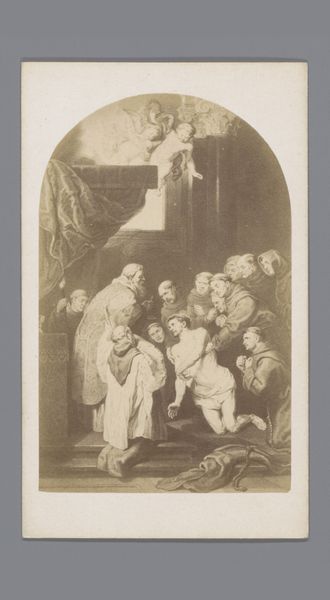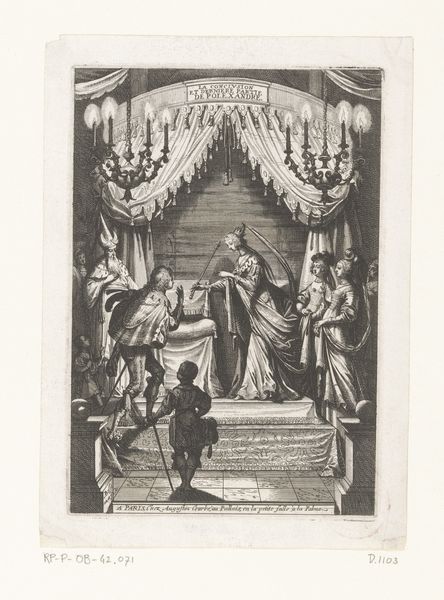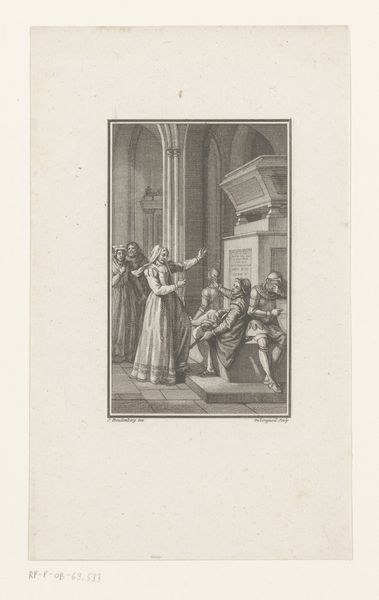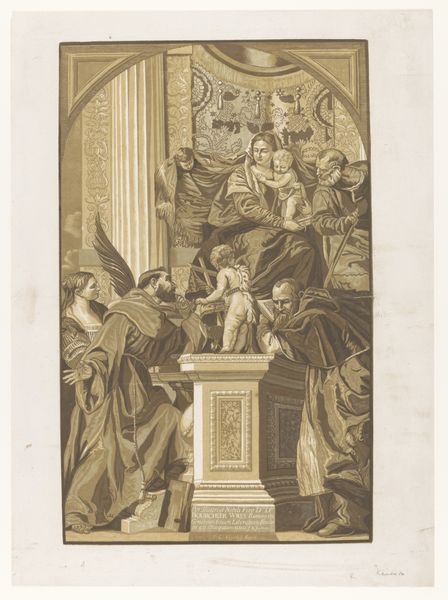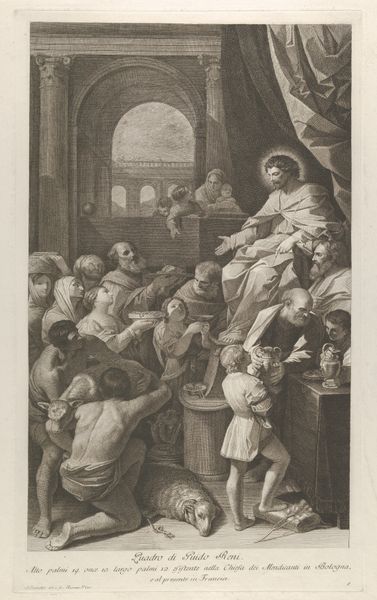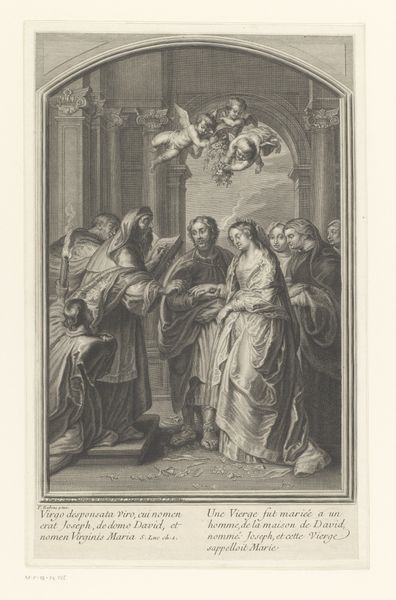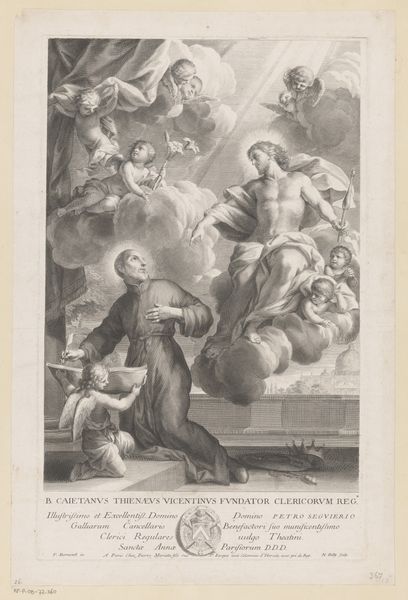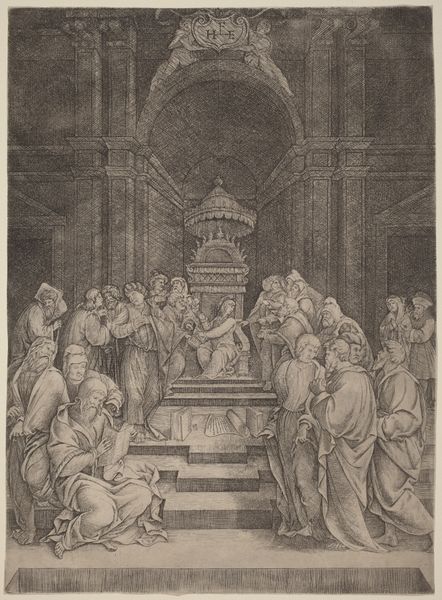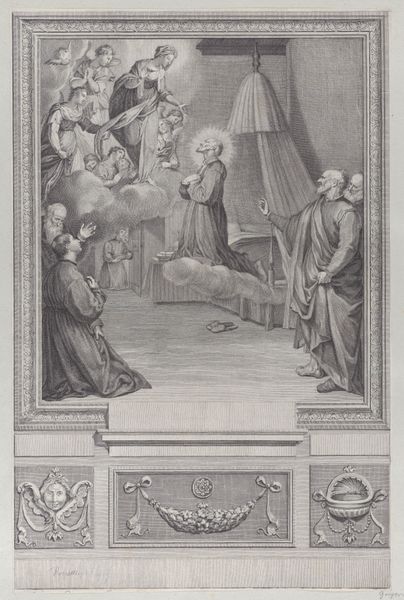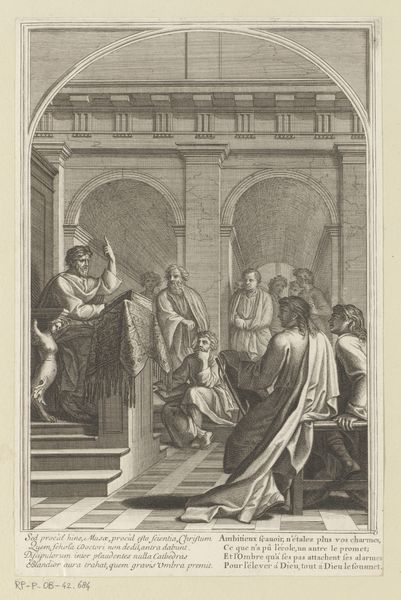
Fotoreproductie van een gravure naar het schilderij Maria, Christus en heiligen naar Paolo Veronese 1852 - 1893
0:00
0:00
Dimensions: height 441 mm, width 307 mm
Copyright: Rijks Museum: Open Domain
Editor: Here we have Carlo Ponti's photographic reproduction of an engraving, circa 1852-1893, depicting the Virgin Mary, Christ, and various saints, after a painting by Paolo Veronese. It's quite intricate and… well, overwhelmingly white. What do you see in this piece? Curator: What strikes me is the reproduction itself. Ponti's photograph isn't simply replicating Veronese's image; it’s engaging in a dialogue about authenticity, access, and power. In the 19th century, who had the ability to commission, own, or even see such artwork? How does the act of photographic reproduction democratize art, and simultaneously, potentially strip it of its aura? Editor: So you’re saying the *act* of reproduction is as important as the image it depicts? Curator: Precisely. Consider the religious context. Veronese's painting likely served to reinforce specific religious doctrines and the power structures of the Church. Ponti’s photograph makes that accessible. But what is *gained* or *lost* by taking art out of a singular space, like a palace or chapel, and allowing mass production? Does mechanical reproduction allow it to potentially speak to *new* viewers? Does it help subvert historical narratives or challenge the dominance of particular historical interpretations? Editor: That’s interesting, I never thought of it that way. I guess it challenges our perception of who gets to control and interpret cultural narratives. Curator: Exactly! This isn't just a copy, but a statement. It begs the question of who controls the narrative. Think about the implications in terms of race, class, and gender – who gets to represent whom, and for what purposes? Editor: This has made me think about reproduction in a totally new way, particularly how power and accessibility play such vital roles in how we should be understanding art today. Curator: Indeed. Looking closely at the means of dissemination adds valuable perspectives.
Comments
No comments
Be the first to comment and join the conversation on the ultimate creative platform.
